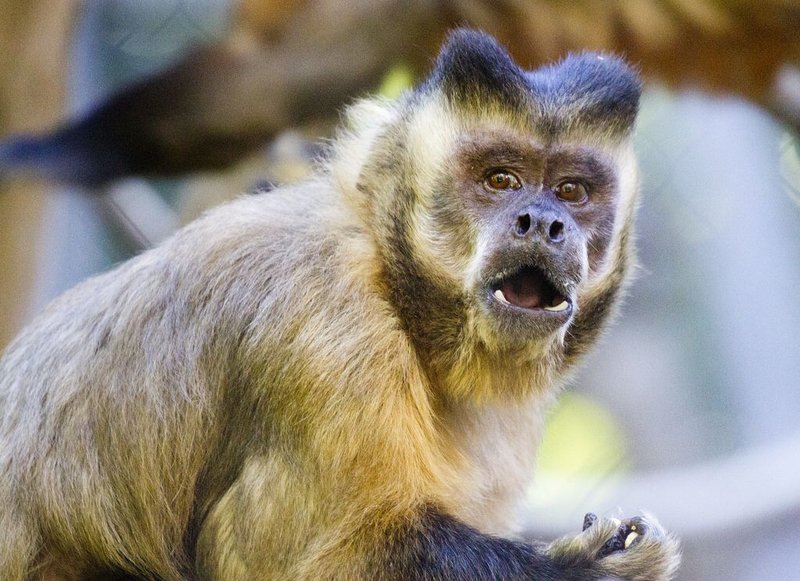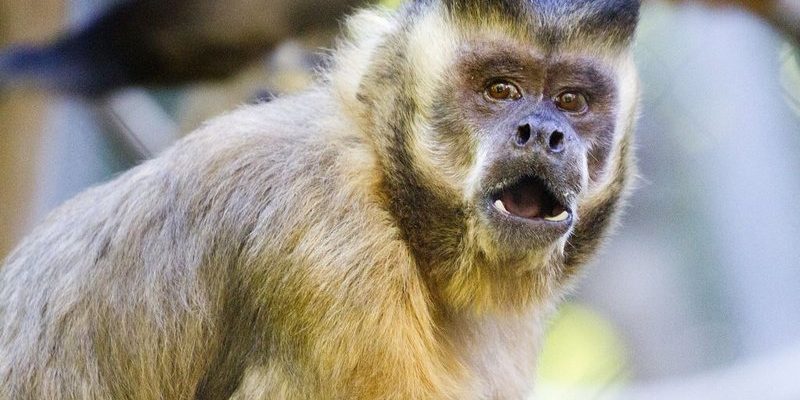
The tufted capuchin monkeys are easily recognized by their unique tuft of hair on their heads, which gives them a bit of a punk rock vibe. But there’s more to them than just their cool hairstyle. They exhibit fascinating behaviors, impressive adaptability, and a strong social structure, making them one of the most intriguing monkeys out there. So, grab your coffee, and let’s dive into some amazing facts about these charismatic creatures!
1. Their Unique Appearance
The tufted capuchin stands out with its distinctive look. These monkeys sport a fluffy tuft of hair on top of their heads, often resembling a mohawk. Their fur is usually a mix of cream and brown shades, which helps them blend into the forest canopy. This camouflage is essential in their natural habitat, where they dodge predators and look for food. Plus, who doesn’t love a monkey with style?
But beyond their spiky tuft, tufted capuchins have expressive faces. Their large, dark eyes and small, upturned noses make them seem almost human-like. This gives them a wide range of facial expressions, helping them communicate with their troop. Just picture a little monkey making a funny face at you—it’s hard not to smile!
2. Social Creatures
Tufted capuchins are incredibly social animals. They live in groups, called troops, which can range from just a few individuals to over a dozen. These groups are often made up of family members, including mothers, fathers, and their offspring. The social structure is matriarchal, meaning that the oldest female usually leads the group and makes important decisions, like where to find food or when to move to a new area.
In their tight-knit communities, tufted capuchins spend a lot of time grooming each other. This isn’t just for cleanliness; grooming helps strengthen bonds and reduce stress among members. Imagine how great it would feel to have a friend help you unwind after a long day. That’s exactly what these monkeys do for each other!
3. Smart and Resourceful
These little monkeys are more than just cute faces; they’re highly intelligent. Tufted capuchins use tools in the wild, which is a sign of advanced cognitive abilities. They’ve been observed using sticks to extract insects from tree bark or even cracking open nuts using stones. This tool use showcases their ability to solve problems and adapt to their environment.
Honestly, if you thought only humans could use tools, think again! Tufted capuchins demonstrate that intelligence comes in various forms. Their knack for using tools is a significant aspect of their survival, allowing them to access food sources that might otherwise be out of reach.
4. A Diverse Diet
What do tufted capuchins eat? Their diet is quite diverse. They primarily eat fruits, seeds, and nuts, but they also enjoy insects and small animals. This flexibility in their diet is crucial, especially when certain foods aren’t readily available in their habitat. For example, in the dry season, they might switch from fruits to more protein-rich insects to meet their nutritional needs.
This adaptability helps them thrive in various environments, from humid rainforests to drier regions. It’s like you changing your diet based on what’s in season at your local farmer’s market. The tufted capuchin’s ability to diversify its meals is a remarkable trait that showcases its resilience.
5. Communication Skills
You might be wondering how tufted capuchins communicate with each other. Well, they have a rich repertoire of vocalizations, gestures, and facial expressions. From high-pitched calls to low growls, they use different sounds to signal warnings, locate each other, or express emotions. This complex communication system is essential for maintaining their social structure.
Imagine being at a big party, and everyone is trying to get your attention. That’s how tufted capuchins navigate their social interactions. They need to be heard and understood, especially in a lively troop where each member plays a role. Their ability to communicate effectively helps keep order and strengthen relationships.
6. Habitat and Distribution
Tufted capuchins are found in several countries across South America, including Brazil, Colombia, and Peru. They thrive in both primary and secondary forests, as well as in areas close to rivers and streams. Their preference for dense foliage provides them with safety from predators and easy access to food.
However, their habitat is under threat from deforestation and human encroachment. As trees are cut down for agriculture or urban development, the tufted capuchin’s home is shrinking, threatening their survival. It’s a stark reminder that these fascinating creatures need our help to continue flourishing in the wild.
7. Their Role in the Ecosystem
Tufted capuchins play an essential role in their ecosystem. As fruit eaters, they help disperse seeds throughout their habitat. When they consume fruits and then defecate, the seeds are spread across the forest floor, promoting plant growth. This seed dispersal is crucial for maintaining the health of their environment.
Think of it as nature’s recycling program! By aiding in reforestation, tufted capuchins contribute to the overall biodiversity of their ecosystem. Protecting them isn’t just about saving one species; it’s about preserving the delicate balance of the entire forest.
8. Conservation Status
The tufted capuchin is currently listed as “Least Concern” by the International Union for Conservation of Nature (IUCN), but their future isn’t guaranteed. While they are not in immediate danger, their populations are declining due to habitat loss and hunting. Conservation efforts focus on habitat protection and creating awareness about the importance of these monkeys in the ecosystem.
You might be wondering what you can do to help. Supporting wildlife conservation organizations, promoting sustainable products, or even sharing information about tufted capuchins can make a difference. Every little bit helps protect these charming creatures and their homes.
9. Interaction with Humans
While tufted capuchins are wild animals, they sometimes come into contact with humans. In some areas, they are taken from their natural habitat to be kept as pets. However, this practice is controversial. Keeping a tufted capuchin as a pet can be challenging due to their social nature and complex needs.
If you’re considering a primate as a pet, think long and hard. These monkeys thrive in social groups and require plenty of space and stimulation. It’s essential to respect their natural behaviors and understand that they belong in the wild, not in our living rooms.
10. Fascinating Research
Scientists have long been fascinated by tufted capuchins. Research on their behavior, intelligence, and social structure offers insight into primate evolution and cognition. Studying these monkeys helps us understand not just their lives but also the broader picture of primate behavior, which can even include human traits.
This research isn’t just academic—it has real-world implications for conservation and understanding how we can coexist with these incredible animals. The more we learn about tufted capuchins, the better we can protect them and their habitats.
As we wrap up our exploration of the tufted capuchin, it’s clear that these monkeys are so much more than their cute appearance. From their complex social structures to their important role in the ecosystem, tufted capuchins offer a wealth of knowledge and insight into the natural world. Protecting these fascinating creatures is essential for maintaining the health of our planet. So next time you think about monkeys, remember the tufted capuchin and all the incredible things that make them special.

